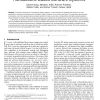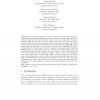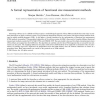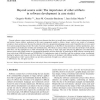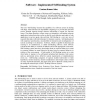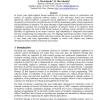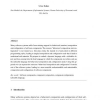TC
1998
13 years 11 months ago
1998
—Preventive maintenance of operational software systems, a novel technique for software fault tolerance, is used specifically to counteract the phenomenon of software “aging.�...
INFSOF
2002
13 years 11 months ago
2002
Identifying code duplication in large multi-platform software systems is a challenging problem. This is due to a variety of reasons including the presence of high-level programmin...
JUCS
2006
13 years 11 months ago
2006
: The size and complexity of software systems are continuously increasing, which makes them difficult and labor-intensive to develop, test and evolve. Since concurrent systems are ...
JSS
2006
13 years 11 months ago
2006
Estimating software size is a difficult task that requires a methodological approach. Many different methods that exist today use distinct abstractions to depict a software system...
JSS
2006
13 years 11 months ago
2006
Current software systems contain increasingly more elements that have not usually been considered in software engineering research and studies. Source artifacts, understood as the...
JSW
2008
13 years 11 months ago
2008
An estimation of change-proneness of parts of a software system is an active topic in the area of software engineering. Such estimates can be used to predict changes to different c...
CLEIEJ
2007
13 years 11 months ago
2007
The term “Self-healing” denotes the capability of a software system in dealing with bugs. Fault tolerance for dependable computing is to provide the specified service through ...
FUIN
2006
13 years 11 months ago
2006
In recent years light-weighted formal methods are of growing interest in construction and analysis of complex concurrent software system. A new rule-action based term rewriting fr...
CL
2006
Springer
13 years 11 months ago
2006
Springer
Many software systems suffer from missing support for behavioral (runtime) composition and configuration of software components. The concern "behavioral composition and confi...
CL
2006
Springer
13 years 11 months ago
2006
Springer
Intensional views and relations have been proposed as a way of actively documenting high-level structural regularities in the source code of a software system. By checking conform...
